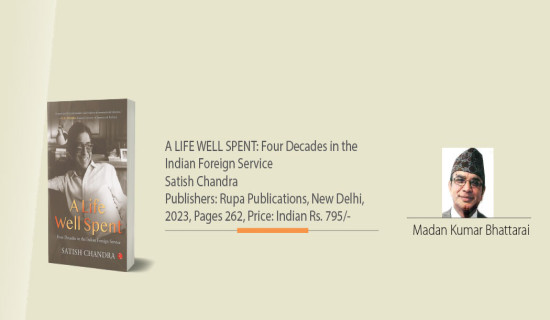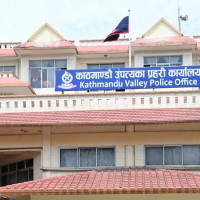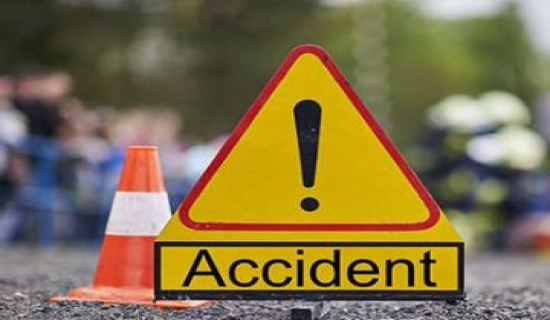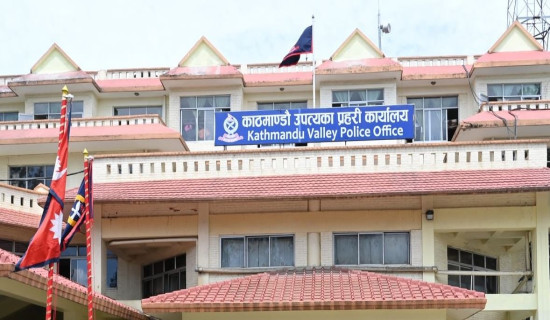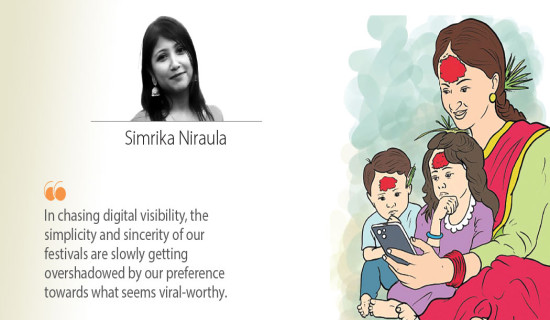- Friday, 5 September 2025
Spirit Of Yenyaa And Indra Jatra
Yenyaa is celebrated every year in Kathmandu. Yenyaa is a special mourning festival celebrated in memory of the deceased. Indrajatra is an integral part of Yenyaa. Yenyaa starts from Hanuman Dhoka Durbar Square every year on Bhadra Shukla Ashtami. This festival lasts for eight days. It keeps the history, culture, and traditions of Kathmandu alive. Yenyaa and Indrajatra, celebrated for eight days, are the main festivals of Kathmandu from a historical and cultural point of view.
Indrajatra has been celebrated since ancient times. According to the story, Indra came to steal flowers, and the locals caught him. His mother, Daagin, came to free him. This festival is believed to have started during the Lichchhavi period. The Indrajatra is celebrated in Europe, America, and India by the Newar community. This year, the festival begins on August 31 and ends on September 7. The festival's official closing, which falls on September 6, is a public holiday in Nepal and Sikkim. The festival was celebrated with much fanfare in London. It is also to be noted that the festival is being celebrated for the first time in Birpara, West Bengal, India.
Rituals and reverence
Yenyaa begins by erecting a Yosing (Lingo) wooden pillar in front of the enormous statue of Kal Bhairav in the Hanuman Dhoka area. It includes various dances and songs, as well as a chariot procession. The gods are worshipped. Locals gather in front of the Taleju temple and raise the Yosing. Bhajans are sung along with prayers. Traditional instruments are played.
This ritual is performed to show gratitude to Lord Indra for the rain. This scene shows the unity of the Newa community. Respect for nature and community spirit are seen in the Yosing. It is done through religious rituals. Then the excitement of the Indrajatra begins. This Lingo is called Indradhwajotthan. Flags with auspicious symbols are hoisted. After the Lingam is erected, a statue of Indra is placed at the bottom.
Prayers are made for the deceased relatives, wishing them to live in the heavenly abode. In the evening, Buddhists recite the Dhaarani Stotra. They walk around the narrow streets of Kathmandu with lamps. Dalucha lamps are hung in every house. The families light butter lamps on the first evening to honour the deceased ancestors. This tradition of walking around with lamps is called Upaku Wanegu. On the roads of old Kathmandu, this procession remembers loved ones who have passed away in the past year. It strengthens the relationship with the ancestors. According to an ancient story, Lord Indra came to Kathmandu many years ago to collect Parijat flowers for his mother, Daagin.
Thinking that she had stolen the flowers, the locals caught her and tied her up. Daagin came to free her son. Indra's tied effigy is kept in Marutol. This scene reminds us of the story of flower theft. Indra's mother, Daagin, walks in the procession wearing a white veil. She scatters seven grains. This act honours the deceased. Lamps are placed in the baumata. These lamps are decorated on reed stands. Satirical plays are staged on the Dabu Pyaakhan.
These plays raise social issues. These traditions show the depth of Newa culture. Stories and beliefs come alive in these rituals. Another important aspect of this festival is the performance of the Dashavatar in front of the Kasthamandap.
The main attraction of Yenyaa is the Kumari Jatra. Kumari is considered a living goddess. She is chosen from the Newa Shakya clan. The procession takes place for three days with the Kumari on a chariot. The chariots of Ganesh and Bhairav also accompany her.
The sight of Kumari brings good fortune. People are eager to catch a glimpse of her. The chariot reaches places like Asan, Indrachowk, and Nyat. The Kumari Jatra combines Hindu and Buddhist culture. The Kumari Jatra is associated with Kathmandu's identity. The Malla kings used to perform the rituals of Kumari Jatra and Indrajatra with devotion to increase their power.
Large masks of Shwet Bhairav and Akash Bhairav are kept during this festival. These fearsome masks are seen in Durbar Square and Indrachowk. Ailathon (Jandraksi) flows from the mouth of Bhairav. This Newari liquor is considered a sacred offering by devotees. People stand in lines and drink this offering. It is believed that this act brings blessings and good fortune. Rice, flowers, and drinks are offered at the Akash Bhairav temple. These rituals show the religious beliefs of the Newars. It is believed that Bhairav protects the city. This tradition reflects the Tantric culture of Kathmandu.
Sacred festive rhythms
One of the key elements that makes the Indrajatra extra exciting and lively is the Tantric dances. These masked dances, representing gods and demons, add a special charm to the streets of Kathmandu. These dances are performed in the main areas, including Basantapur Durbar Square, Indrachowk, and Asan. In Mahakali Pyaakhan, dancers, wearing masks of various forms of Mahakali, perform intricate moves that demonstrate power and grace, narrating the story of a battle with evil forces. It highlights the religious harmony and artistic expression of the Newah community.
The special attraction of this festival is Majhipa Lakhe, who is considered a protector of the city's children from evil spirits and epidemics. In this tantric dance, the Lakhe wears a scary mask and imitates the movements of snakes, frogs, eagles, and tigers. A little boy named Jhyalincha teases the Lakhe, who is believed to free children from fear and symbolise warding off epidemics. The Lakhe mask is decorated with yak hair and is worshipped as a deity before the performance. Members of the Ranjitkar caste have kept it alive for generations. These tantric dances enliven the streets of Kathmandu and vividly present Newa art, civilisation, and mythology, strengthening the community's cultural identity. Equally interesting in the Indrajatra is the Pulukisi, a symbol of the white elephant that came to Kathmandu from heaven with Indra. In this dance, the residents of Kilaagal perform wearing masks resembling elephants, which run through the crowd and play with people, wag their tails, and engage in mischievous activities.
According to legend, Pulukisi is believed to be searching for Indra after the locals tied him up. This scene is entertaining and doubles the festival's excitement, accompanied by music and dancing with torches.
The festival concludes on the last day of Indrajatra with the Nanicha Yaa, also known as the third leg of the Kumari Jatra. It starts from Basantapur, passes through Pyaphal, Yatkha, Nyata, Kilagal, Bhedasing, Indrachowk, and Makhan, and returns to Basantapur. Since 2068 BS, the tradition of pulling the Kumari's chariot only by women on the day of Nanicha Yaa has started, encouraging gender equality and women's participation. Then the jatra ends, and the Lingo of the Indra flag is dismantled that night. This pole is brought from the forest near the canal, and after it is dismantled, it is taken to the Bagmati River and broken. The pole pieces are used to light lamps in the Bhairav temple, ending the spiritual cycle. This ritual reflects the cycle of life and death.
(The author holds a Ph.D. in Journalism and Mass Communication.)






